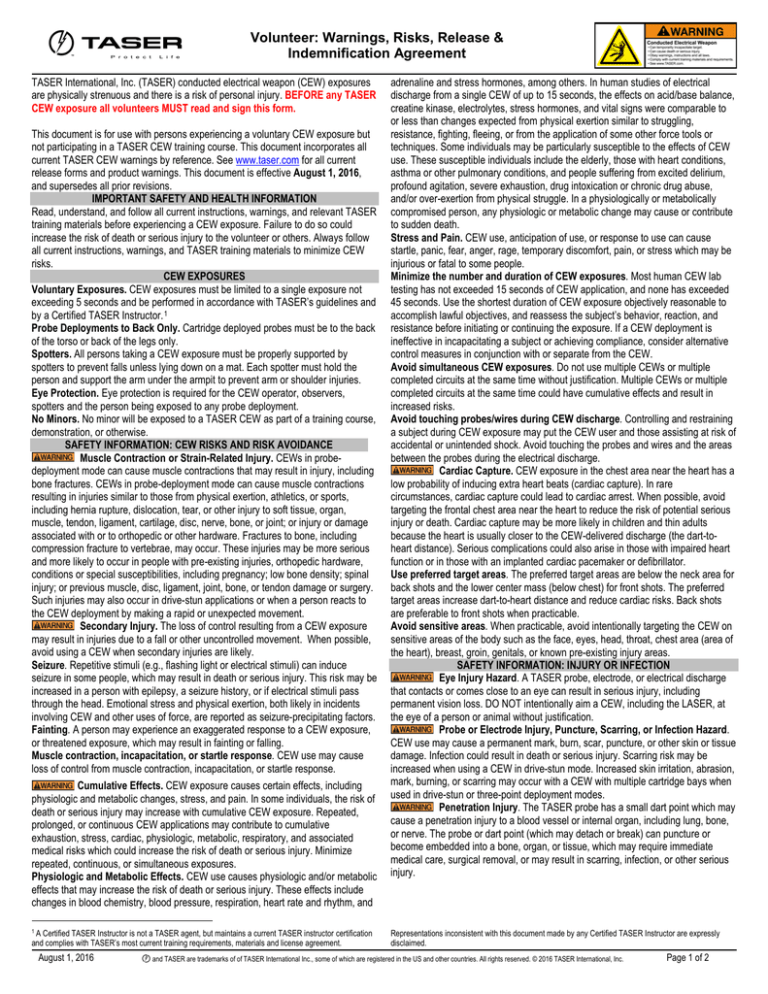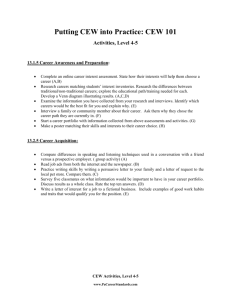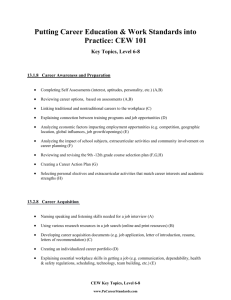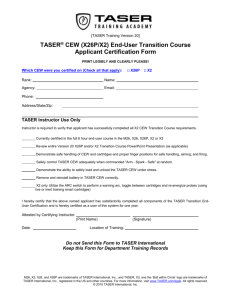
Volunteer: Warnings, Risks, Release &
Indemnification Agreement
TASER International, Inc. (TASER) conducted electrical weapon (CEW) exposures
are physically strenuous and there is a risk of personal injury. BEFORE any TASER
CEW exposure all volunteers MUST read and sign this form.
This document is for use with persons experiencing a voluntary CEW exposure but
not participating in a TASER CEW training course. This document incorporates all
current TASER CEW warnings by reference. See www.taser.com for all current
release forms and product warnings. This document is effective August 1, 2016,
and supersedes all prior revisions.
IMPORTANT SAFETY AND HEALTH INFORMATION
Read, understand, and follow all current instructions, warnings, and relevant TASER
training materials before experiencing a CEW exposure. Failure to do so could
increase the risk of death or serious injury to the volunteer or others. Always follow
all current instructions, warnings, and TASER training materials to minimize CEW
risks.
CEW EXPOSURES
Voluntary Exposures. CEW exposures must be limited to a single exposure not
exceeding 5 seconds and be performed in accordance with TASER’s guidelines and
by a Certified TASER Instructor. 1
Probe Deployments to Back Only. Cartridge deployed probes must be to the back
of the torso or back of the legs only.
Spotters. All persons taking a CEW exposure must be properly supported by
spotters to prevent falls unless lying down on a mat. Each spotter must hold the
person and support the arm under the armpit to prevent arm or shoulder injuries.
Eye Protection. Eye protection is required for the CEW operator, observers,
spotters and the person being exposed to any probe deployment.
No Minors. No minor will be exposed to a TASER CEW as part of a training course,
demonstration, or otherwise.
SAFETY INFORMATION: CEW RISKS AND RISK AVOIDANCE
Muscle Contraction or Strain-Related Injury. CEWs in probedeployment mode can cause muscle contractions that may result in injury, including
bone fractures. CEWs in probe-deployment mode can cause muscle contractions
resulting in injuries similar to those from physical exertion, athletics, or sports,
including hernia rupture, dislocation, tear, or other injury to soft tissue, organ,
muscle, tendon, ligament, cartilage, disc, nerve, bone, or joint; or injury or damage
associated with or to orthopedic or other hardware. Fractures to bone, including
compression fracture to vertebrae, may occur. These injuries may be more serious
and more likely to occur in people with pre-existing injuries, orthopedic hardware,
conditions or special susceptibilities, including pregnancy; low bone density; spinal
injury; or previous muscle, disc, ligament, joint, bone, or tendon damage or surgery.
Such injuries may also occur in drive-stun applications or when a person reacts to
the CEW deployment by making a rapid or unexpected movement.
Secondary Injury. The loss of control resulting from a CEW exposure
may result in injuries due to a fall or other uncontrolled movement. When possible,
avoid using a CEW when secondary injuries are likely.
Seizure. Repetitive stimuli (e.g., flashing light or electrical stimuli) can induce
seizure in some people, which may result in death or serious injury. This risk may be
increased in a person with epilepsy, a seizure history, or if electrical stimuli pass
through the head. Emotional stress and physical exertion, both likely in incidents
involving CEW and other uses of force, are reported as seizure-precipitating factors.
Fainting. A person may experience an exaggerated response to a CEW exposure,
or threatened exposure, which may result in fainting or falling.
Muscle contraction, incapacitation, or startle response. CEW use may cause
loss of control from muscle contraction, incapacitation, or startle response.
Cumulative Effects. CEW exposure causes certain effects, including
physiologic and metabolic changes, stress, and pain. In some individuals, the risk of
death or serious injury may increase with cumulative CEW exposure. Repeated,
prolonged, or continuous CEW applications may contribute to cumulative
exhaustion, stress, cardiac, physiologic, metabolic, respiratory, and associated
medical risks which could increase the risk of death or serious injury. Minimize
repeated, continuous, or simultaneous exposures.
Physiologic and Metabolic Effects. CEW use causes physiologic and/or metabolic
effects that may increase the risk of death or serious injury. These effects include
changes in blood chemistry, blood pressure, respiration, heart rate and rhythm, and
A Certified TASER Instructor is not a TASER agent, but maintains a current TASER instructor certification
and complies with TASER’s most current training requirements, materials and license agreement.
1
August 1, 2016
adrenaline and stress hormones, among others. In human studies of electrical
discharge from a single CEW of up to 15 seconds, the effects on acid/base balance,
creatine kinase, electrolytes, stress hormones, and vital signs were comparable to
or less than changes expected from physical exertion similar to struggling,
resistance, fighting, fleeing, or from the application of some other force tools or
techniques. Some individuals may be particularly susceptible to the effects of CEW
use. These susceptible individuals include the elderly, those with heart conditions,
asthma or other pulmonary conditions, and people suffering from excited delirium,
profound agitation, severe exhaustion, drug intoxication or chronic drug abuse,
and/or over-exertion from physical struggle. In a physiologically or metabolically
compromised person, any physiologic or metabolic change may cause or contribute
to sudden death.
Stress and Pain. CEW use, anticipation of use, or response to use can cause
startle, panic, fear, anger, rage, temporary discomfort, pain, or stress which may be
injurious or fatal to some people.
Minimize the number and duration of CEW exposures. Most human CEW lab
testing has not exceeded 15 seconds of CEW application, and none has exceeded
45 seconds. Use the shortest duration of CEW exposure objectively reasonable to
accomplish lawful objectives, and reassess the subject’s behavior, reaction, and
resistance before initiating or continuing the exposure. If a CEW deployment is
ineffective in incapacitating a subject or achieving compliance, consider alternative
control measures in conjunction with or separate from the CEW.
Avoid simultaneous CEW exposures. Do not use multiple CEWs or multiple
completed circuits at the same time without justification. Multiple CEWs or multiple
completed circuits at the same time could have cumulative effects and result in
increased risks.
Avoid touching probes/wires during CEW discharge. Controlling and restraining
a subject during CEW exposure may put the CEW user and those assisting at risk of
accidental or unintended shock. Avoid touching the probes and wires and the areas
between the probes during the electrical discharge.
Cardiac Capture. CEW exposure in the chest area near the heart has a
low probability of inducing extra heart beats (cardiac capture). In rare
circumstances, cardiac capture could lead to cardiac arrest. When possible, avoid
targeting the frontal chest area near the heart to reduce the risk of potential serious
injury or death. Cardiac capture may be more likely in children and thin adults
because the heart is usually closer to the CEW-delivered discharge (the dart-toheart distance). Serious complications could also arise in those with impaired heart
function or in those with an implanted cardiac pacemaker or defibrillator.
Use preferred target areas. The preferred target areas are below the neck area for
back shots and the lower center mass (below chest) for front shots. The preferred
target areas increase dart-to-heart distance and reduce cardiac risks. Back shots
are preferable to front shots when practicable.
Avoid sensitive areas. When practicable, avoid intentionally targeting the CEW on
sensitive areas of the body such as the face, eyes, head, throat, chest area (area of
the heart), breast, groin, genitals, or known pre-existing injury areas.
SAFETY INFORMATION: INJURY OR INFECTION
Eye Injury Hazard. A TASER probe, electrode, or electrical discharge
that contacts or comes close to an eye can result in serious injury, including
permanent vision loss. DO NOT intentionally aim a CEW, including the LASER, at
the eye of a person or animal without justification.
Probe or Electrode Injury, Puncture, Scarring, or Infection Hazard.
CEW use may cause a permanent mark, burn, scar, puncture, or other skin or tissue
damage. Infection could result in death or serious injury. Scarring risk may be
increased when using a CEW in drive-stun mode. Increased skin irritation, abrasion,
mark, burning, or scarring may occur with a CEW with multiple cartridge bays when
used in drive-stun or three-point deployment modes.
Penetration Injury. The TASER probe has a small dart point which may
cause a penetration injury to a blood vessel or internal organ, including lung, bone,
or nerve. The probe or dart point (which may detach or break) can puncture or
become embedded into a bone, organ, or tissue, which may require immediate
medical care, surgical removal, or may result in scarring, infection, or other serious
injury.
Representations inconsistent with this document made by any Certified TASER Instructor are expressly
disclaimed.
© and TASER are trademarks of of TASER International Inc., some of which are registered in the US and other countries. All rights reserved. © 2016 TASER International, Inc.
Page 1 of 2
Volunteer: Warnings, Risks, Release &
Indemnification Agreement
SAFETY INFORMATION: CEW DEPLOYMENT AND USE
CEWs and cartridges are weapons, and as with any weapon follow safe
weapon-handling practices and store your CEW securely. Significant differences
exist between different TASER CEW models. Before using any CEW, including a
multi-shot CEW, ensure you understand the functioning and effects of that model.
Follow practices in TASER’s warnings and training materials. Failure to follow the
warnings may result in death or serious injury to the user or others.
Confusing Handgun with CEW. Confusing a handgun with a CEW
could result in death or serious injury. Learn the differences in the physical feel and
holstering characteristics between your CEW and your handgun to help avoid
confusion. Always follow your agency’s Guidance and training.
SAFETY INFORMATION: CEW EFFECTIVENESS
Subject Not Incapacitated. An ineffective CEW application could
increase the risk of death or serious injury to the user, the subject, or others. If a
CEW does not operate as intended or if subject is not incapacitated, disengage,
redeploy the CEW, or use other force options. A CEW’s effects may be limited by
many factors, including absence of delivered electrical charge due to misses,
clothing disconnect, intermittent connection, or wire breakage; probe locations or
spread; subject’s muscle mass; or movement. Some of the factors that may
influence the effectiveness of CEW use in effecting or achieving control of a subject
include:
Subject may not be fully incapacitated. Even though a subject may be affected
by a CEW in one part of his body, the subject may maintain full muscle control of
other portions of his body. Be prepared in case the subject is not fully incapacitated.
Subject may recover immediately. A subject receiving a CEW discharge may
immediately regain physical or cognitive abilities upon cessation of the delivered
CEW discharge. Be prepared in case the subject immediately recovers.
Drive-stun mode is for pain compliance only. The use of a handheld CEW in
drive-stun mode is painful, but generally does not cause incapacitation. Drive-stun
use may not be effective on emotionally disturbed persons or others who may not
respond to pain due to a mind-body disconnect. Avoid using repeated drive-stuns on
such individuals if compliance is not achieved.
SAFETY INFORMATION: GENERAL PRECAUTIONS
Unintentional CEW Deployment or Discharge Hazard. Unintentional
CEW activation or unexpected cartridge discharge could result in death or serious
injury to the user, subject, or others.
Avoid static electricity. Keep cartridge away from sources of static electricity.
Static electricity can cause a CEW or standard cartridges to discharge
unexpectedly, possibly resulting in serious injury.
Keep body parts away from front of CEW or cartridge. Always keep your hands
and body parts away from the front of the CEW and cartridge. If the CEW
discharges unexpectedly you could be injured.
***************
IF YOU HAVE A CONDITION OR PRE-EXISTING INJURY THAT COULD
BE AGGRAVATED BY CEW EXPOSURE DO NOT PARTICIPATE.
Please check all boxes that apply:
I do not have injuries, physical or mental conditions that could be
aggravated by CEW exposure.
I have pre-existing injuries or conditions that could be aggravated
by CEW exposure.
August 1, 2016
LIABILITY RELEASE & INDEMNIFICATION AGREEMENT
In consideration of, and as a condition precedent to, receiving information on
TASER products and a CEW Exposure; I acknowledge and agree as follows:
I have read, fully understand and accept the risks. I have read, fully
understand, and accept the risks as stated in this document and TASER’s current
warnings (“Risks”) and that these Risks exist whether or not I have pre-existing
injuries. With full knowledge of the Risks, I voluntarily agree to receive a CEW
exposure.
I accept the Risks. Understanding the Risks, I assume all Risks inherent in
the CEW exposure, whether known or unknown, foreseen or unforeseen.
Release and hold harmless. I release and hold harmless TASER, its agents,
officers, directors, employees, distributors, my instructor, and my employer
(collectively “Released Parties”), from any and all claims, including but not limited to,
claims for strict liability, breach of warranty, failure to warn, or any other theory of
liability whatsoever even if due to the NEGLIGENCE or GROSS NEGLIGENCE of
the Released Parties. I specifically waive any statutory rights I may have regarding
the release of unknown claims.
I agree no one will sue Released Parties. I promise that neither I nor anyone
on my behalf will ever sue or bring any other legal action or claim against the
Released Parties for anything related to my TASER CEW exposure.
I will fully indemnify (reimburse) all costs of Released Parties. I further
agree that if I or anyone else files any claim against any Released Party arising out
of my TASER CEW exposure in violation of this agreement, I will defend, indemnify
and reimburse the Released Parties for any judgment, court costs, expenses, and
reasonable expert and attorney fees regardless of who prevails.
Workers’ Compensation Rights. This release does not waive any rights I
may have under Workers’ Compensation Laws. However, I waive any Workers’
Compensation subrogation rights against the Released Parties and agree to defend
and indemnify TASER against any and all claims that may be brought against it by
my employer. I agree that any recovery under Workers’ Compensation Laws does
not change, extend or enlarge the waivers and protections inherent in this
agreement.
This agreement supersedes any other representation. This release
supersedes any other statement, agreement or representation, written or oral,
concerning my TASER CEW exposure. I affirm that this is my entire agreement with
TASER and I am not relying on any representation by my instructor or employer
inconsistent with TASER’s warnings and the Risks set forth in this document.
This agreement is a binding contract. I intend this form be legally binding
upon me, my heirs, executors, administrators, attorneys and assigns. This
agreement is contractual and not a mere recital. If any part of this agreement is held
vague, invalid, or otherwise unenforceable, the rest of the agreement will continue in
full force and effect.
I am competent to be bound by this agreement. I affirm that I am
competent to enter into and be bound by this agreement; that I have read and
understand this Liability Release & Indemnification Agreement in its entirety; that I
have not been induced to sign this agreement by any promise or representation;
and that I sign it voluntarily and of my own free will. By signing below I understand
that I am giving up certain legal rights, including the right to recover damages in
case of injury.
Date
Signed
Printed Name___________________________________________
Address_______________________________________________
This completed, signed form shall be retained by the agency performing the voluntary
exposure for at least 10 years.
Agencies may opt to retain the form longer than this time frame as deemed necessary.
Questions should be directed to legal@taser.com
© and TASER are trademarks of of TASER International Inc., some of which are registered in the US and other countries. All rights reserved. © 2016 TASER International, Inc.
Page 2 of 2





